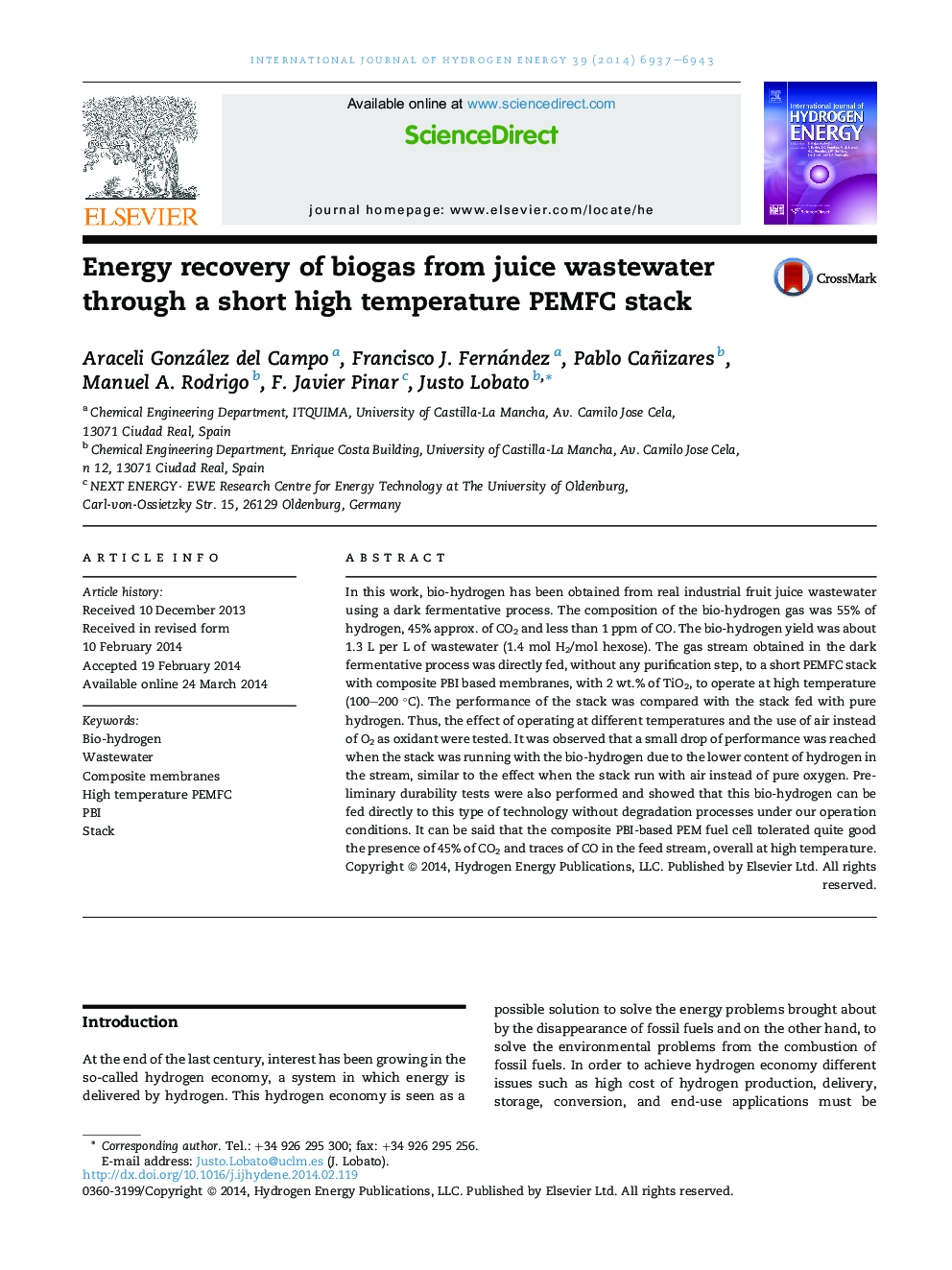| Article ID | Journal | Published Year | Pages | File Type |
|---|---|---|---|---|
| 1273448 | International Journal of Hydrogen Energy | 2014 | 7 Pages |
•Bio-hydrogen is directly fed to a composite PBI-based PEMFC stack operating at high temperature.•A small drop of performance was reached when the stack was running with the bio-hydrogen and air.•PBI-based PEMFC at high temperature tolerated quite well the presence of CO2 and traces of CO in the fed bio-hydrogen.
In this work, bio-hydrogen has been obtained from real industrial fruit juice wastewater using a dark fermentative process. The composition of the bio-hydrogen gas was 55% of hydrogen, 45% approx. of CO2 and less than 1 ppm of CO. The bio-hydrogen yield was about 1.3 L per L of wastewater (1.4 mol H2/mol hexose). The gas stream obtained in the dark fermentative process was directly fed, without any purification step, to a short PEMFC stack with composite PBI based membranes, with 2 wt.% of TiO2, to operate at high temperature (100–200 °C). The performance of the stack was compared with the stack fed with pure hydrogen. Thus, the effect of operating at different temperatures and the use of air instead of O2 as oxidant were tested. It was observed that a small drop of performance was reached when the stack was running with the bio-hydrogen due to the lower content of hydrogen in the stream, similar to the effect when the stack run with air instead of pure oxygen. Preliminary durability tests were also performed and showed that this bio-hydrogen can be fed directly to this type of technology without degradation processes under our operation conditions. It can be said that the composite PBI-based PEM fuel cell tolerated quite good the presence of 45% of CO2 and traces of CO in the feed stream, overall at high temperature.
